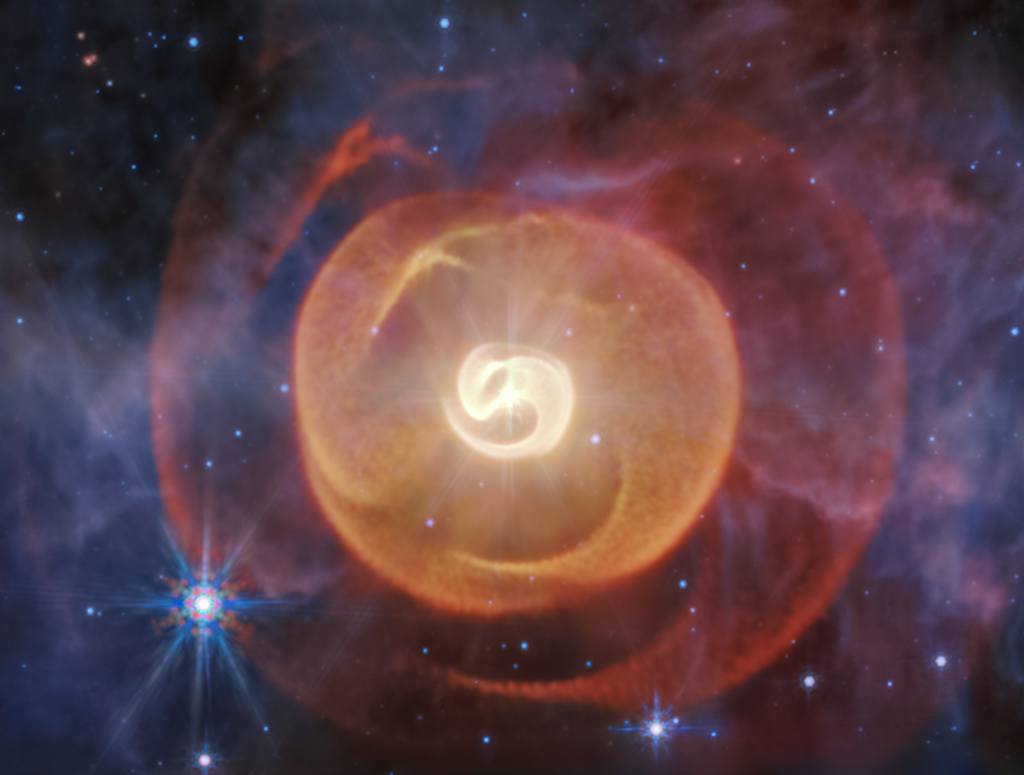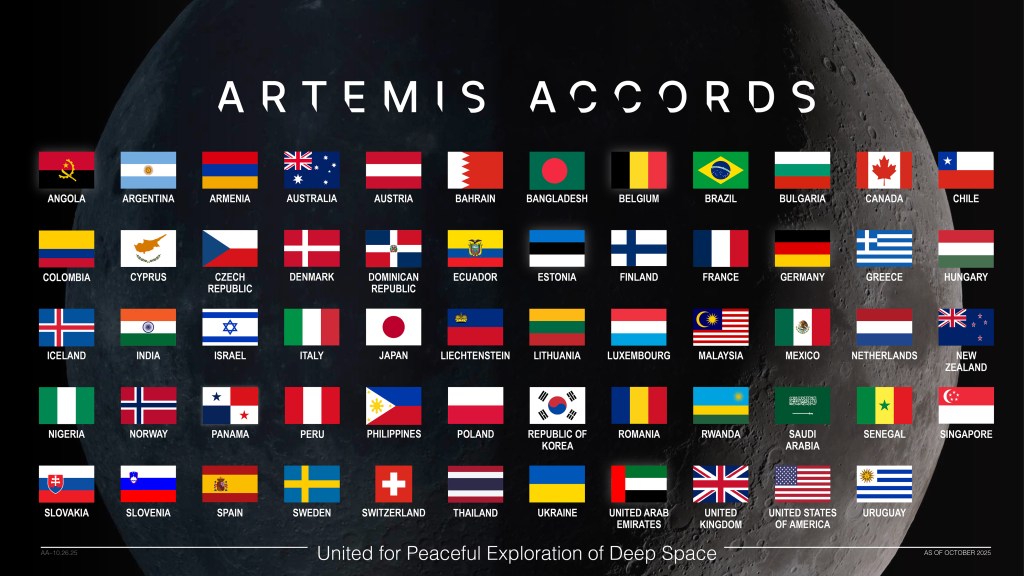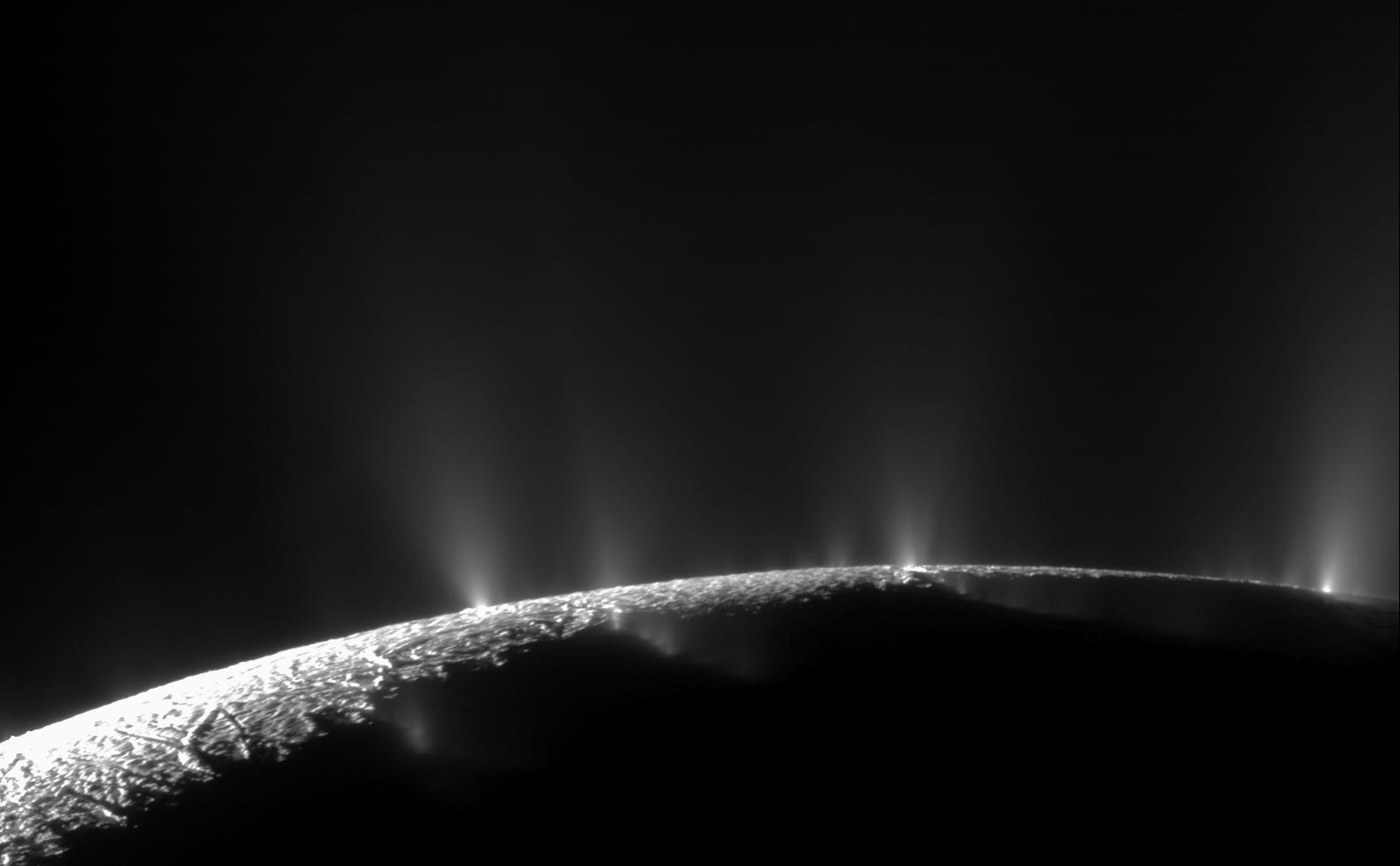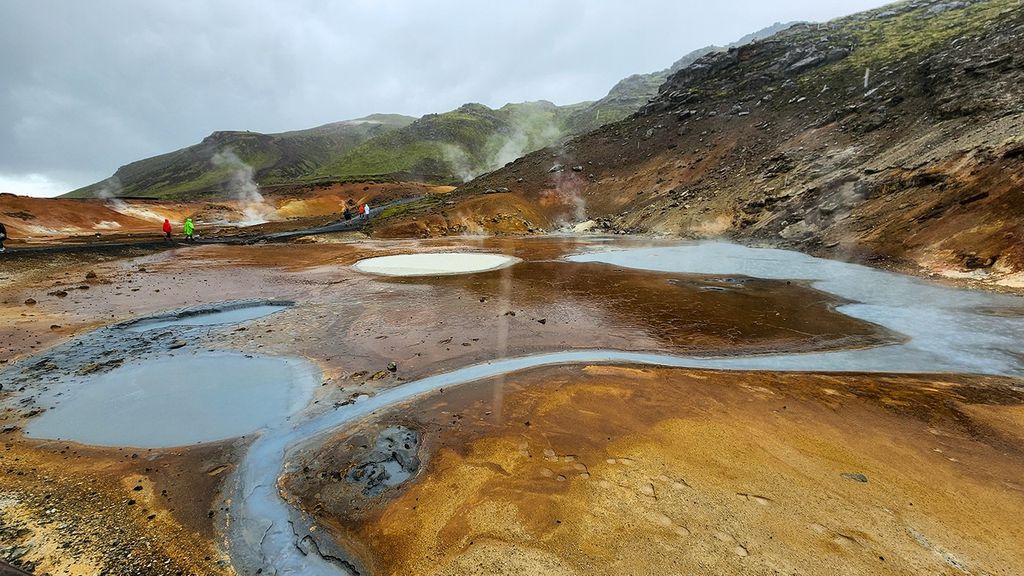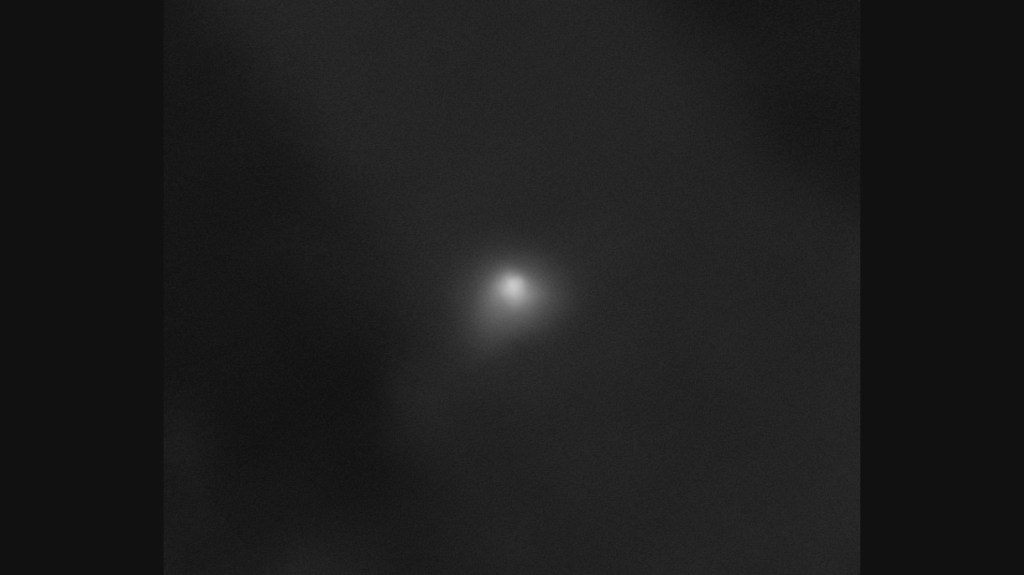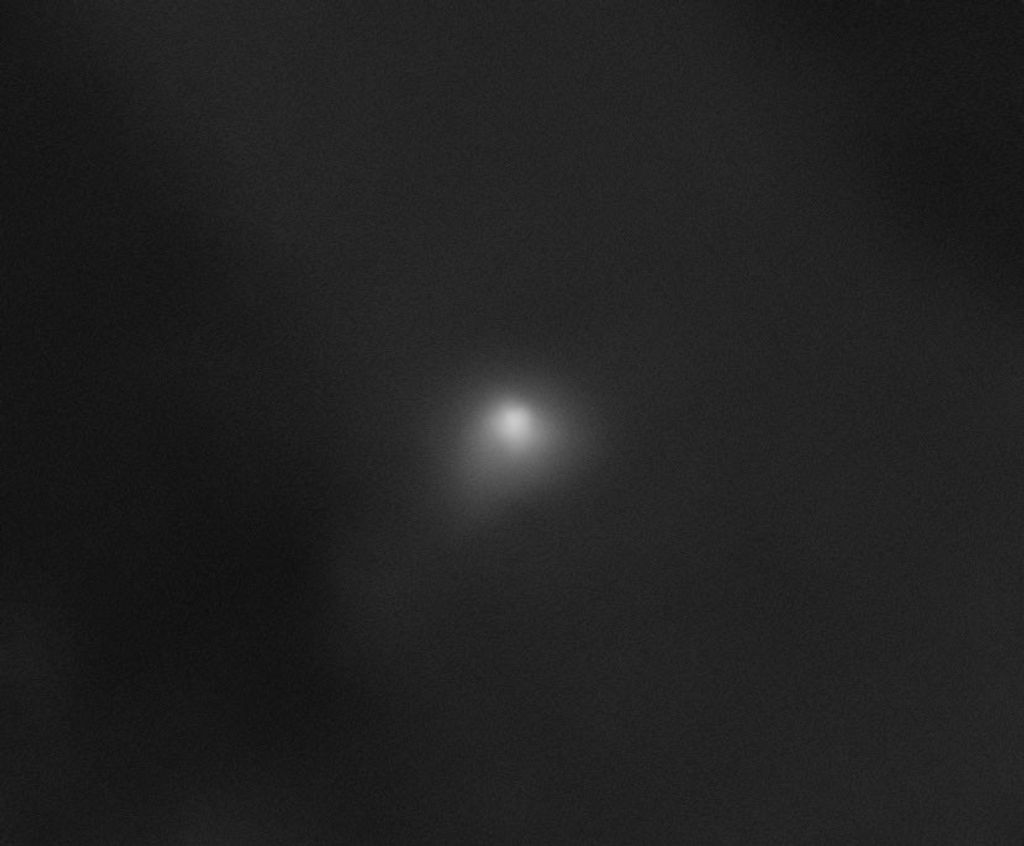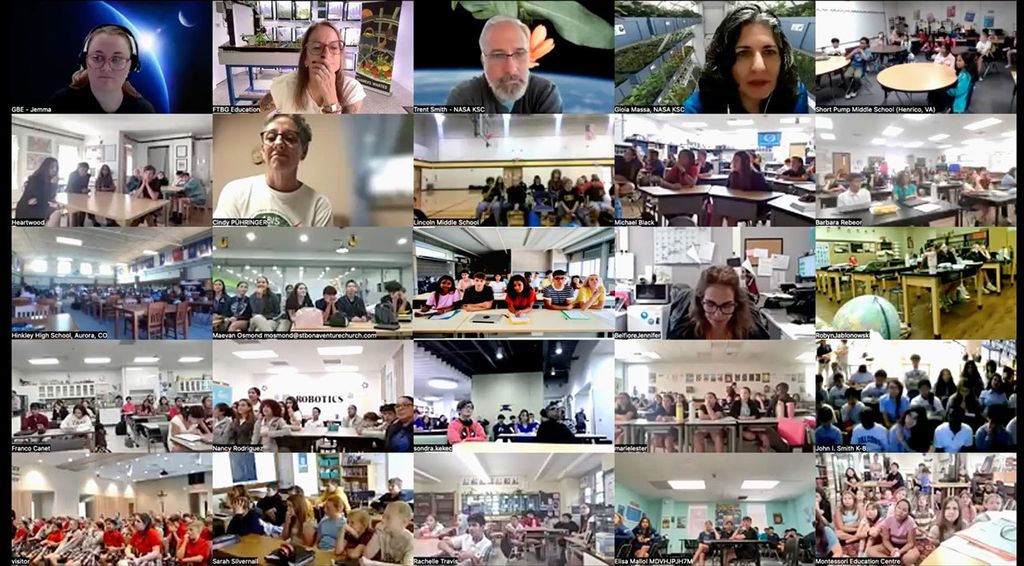1 min read
Kilonova and Host Galaxy (Compass Image)
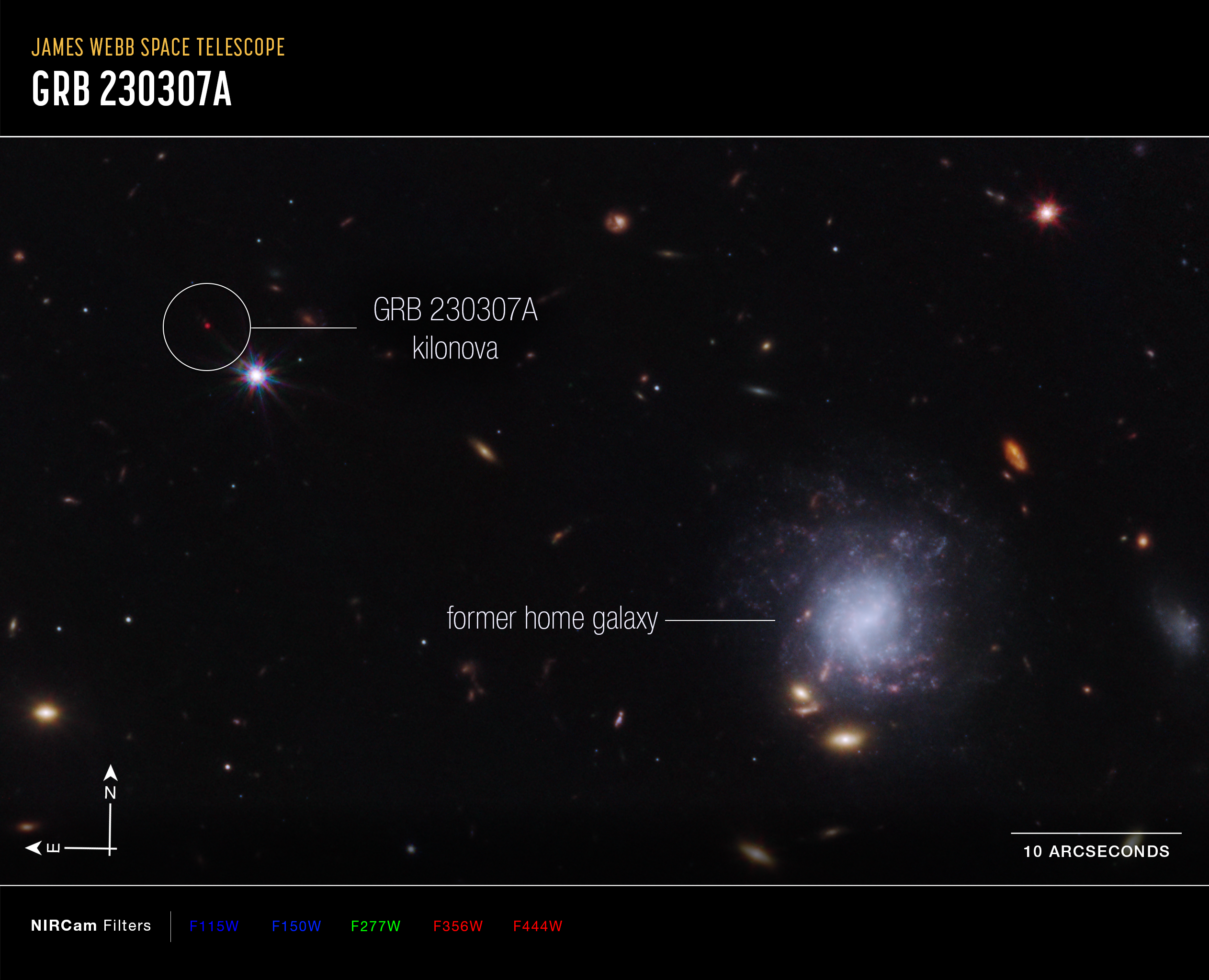
An image of the GRB 230307A kilonova and the former home galaxy of the neutron stars captured by Webb's NIRCam (Near-Infrared Camera), with compass arrows, a scale bar, and color key for reference.
The north and east compass arrows show the orientation of the image on the sky. Note that the relationship between north and east on the sky (as seen from below) is flipped relative to direction arrows on a map of the ground (as seen from above).
The scale bar is labeled in arcseconds, which is a measure of angular distance on the sky. One arcsecond is equal to 1/3600 of one degree of arc. (The full Moon has an angular diameter of about 0.5 degrees.) The actual size of an object that covers one arcsecond on the sky depends on its distance from the telescope.
This image shows invisible near-infrared wavelengths of light that have been translated into visible-light colors. The color key shows which NIRCam filters were used when collecting the light. The color of each filter name is the visible light color used to represent the infrared light that passes through that filter.
Extended Description and Image Alt Text
Extended Description
Image titled “James Webb Space Telescope, GRB 230307A,” with compass arrows, scale bar, and color key.
Image
Bright galaxies and other light sources in various sizes and shapes are scattered across a black swath of space: small points, hazy elliptical-like smudges with halos, and spiral-shaped blobs. The objects vary in color: white, blue-white, yellow-white, and orange-red. Toward the center right is a blue-white spiral galaxy seen face-on that is larger than the other light sources in the image. The galaxy is labeled “former home galaxy.” Toward the upper left is a small red point, which has a white circle around it and is labeled “GRB 230307A kilonova.”
Compass Arrows, Scale Bar, and Color Key
At the bottom left are compass arrows indicating the orientation of the image on the sky. The north arrow points in the 12 o’clock direction. The east arrow points toward 9 o’clock. At the lower right is a scale bar labeled 10 arcseconds. Below the image is a color key showing which NIRCam filters were used to create the image and which visible-light color is assigned to each filter. From left to right, NIRCam filters are: F115W and F150W are blue; F277W is green; F356W and F444W are red.
Image Alt Text
Bright galaxies and other light sources in various sizes, shapes, and colors are scattered across a black swath of space. Toward the center right is a blue-white spiral galaxy seen face-on that is larger than the other light sources in the image. The galaxy is labeled “former home galaxy.” Toward the upper left is a small red point, which has a white circle around it and is labeled “GRB 230307A kilonova.” At the bottom left are compass arrows indicating the orientation of the image on the sky. The north arrow points in the 12 o’clock direction. The east arrow points toward 9 o’clock. At the lower right is a scale bar labeled 10 arcseconds. Below the image is a color key showing which NIRCam filters were used to create the image and which visible-light color is assigned to each filter.
About the Object
- R.A. PositionR.A. PositionRight ascension – analogous to longitude – is one component of an object's position.04:03:26.01
- Dec. PositionDec. PositionDeclination – analogous to latitude – is one component of an object's position.-75:22:42.78
- ConstellationConstellationOne of 88 recognized regions of the celestial sphere in which the object appears.Mensa
- DimensionsDimensionsThe physical size of the object or the apparent angle it subtends on the sky.Image is approximately 1.3 arcminutes across
About the Data
- Data DescriptionData DescriptionProposal: A description of the observations, their scientific justification, and the links to the data available in the science archive.
Science Team: The astronomers who planned the observations and analyzed the data. "PI" refers to the Principal Investigator.The Webb observations include those from program: 4434 (A. Levan)
- InstrumentInstrumentThe science instrument used to produce the data.NIRCam
- Exposure DatesExposure DatesThe date(s) that the telescope made its observations and the total exposure time.05 April 2023, 08 May 2023
- FiltersFiltersThe camera filters that were used in the science observations.F115W, F150W, F277W, F356W, F444W
- Object NameObject NameA name or catalog number that astronomers use to identify an astronomical object.GRB 230307A
- Object DescriptionObject DescriptionThe type of astronomical object.Gamma ray burst from two colliding neutron stars
- Release DateOctober 25, 2023
- Science ReleaseNASA’s Webb Makes First Detection of Heavy Element from Star Merger
- CreditImage: NASA, ESA, CSA, STScI, Andrew Levan (IMAPP, Warw)

This image is a composite of separate exposures acquired by the James Webb Space Telescope using the NIRCam instrument. Several filters were used to sample wide wavelength ranges. The color results from assigning different hues (colors) to each monochromatic (grayscale) image associated with an individual filter. In this case, the assigned colors are: Blue: F115W + F150W Green: F277W Red: F356W + F444W
Related Images & Videos
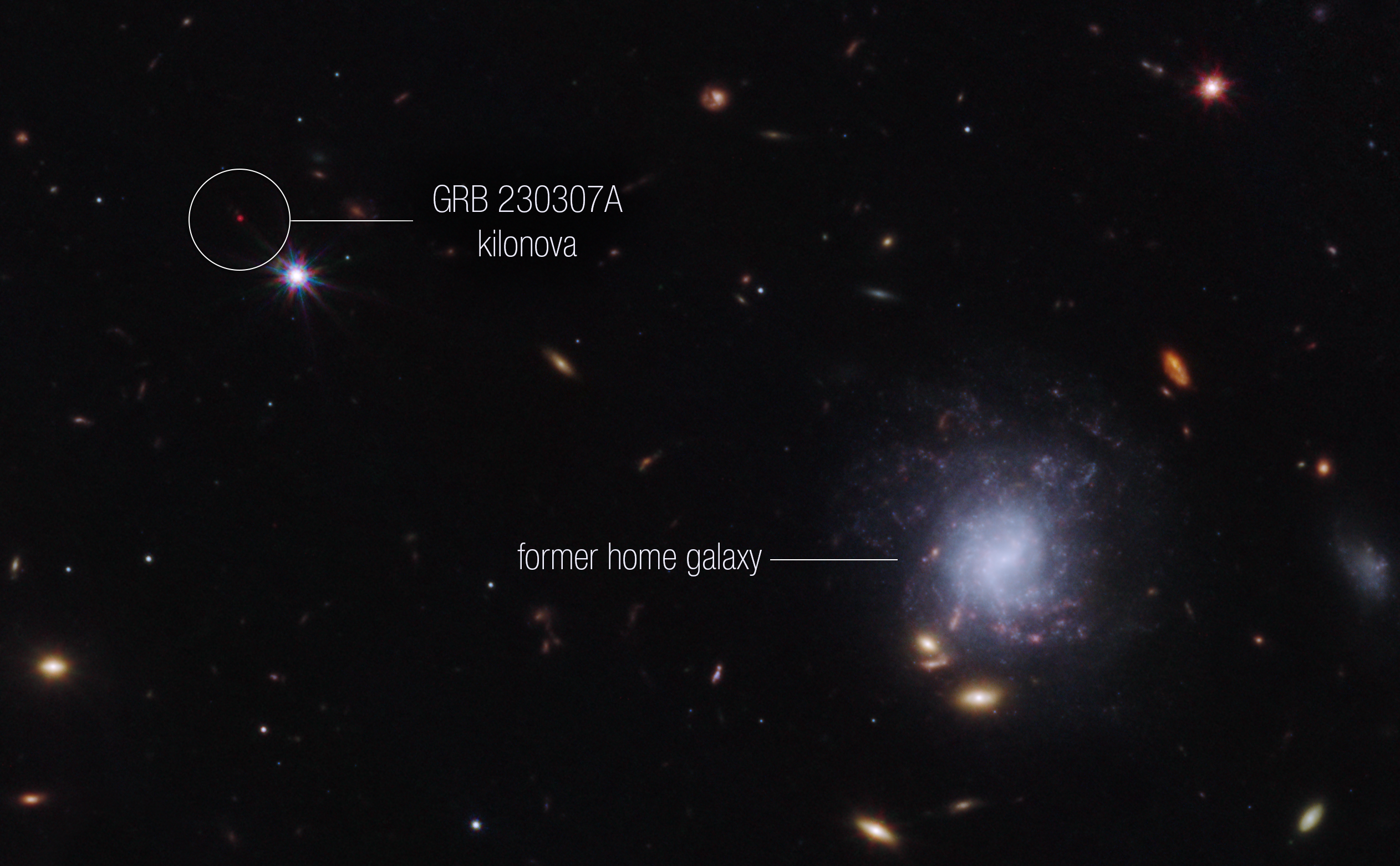
Kilonova and Host Galaxy
A team of scientists has used NASA’s James Webb Space Telescope to observe an exceptionally bright gamma-ray burst, GRB 230307A, and its associated kilonova. Kilonovas—an explosion produced by a neutron star merging with either a black hole or with another neutron star—are...

Kilonova Emission Spectrum
This graphic presentation compares the spectral data of GRB 230307A’s kilonova as observed by the James Webb Space Telescope and a kilonova model. Both show a distinct peak in the region of the spectrum associated with tellurium, with the area shaded in red. The detection of...
Share
Details
Laura Betz
NASA’s Goddard Space Flight Center
Greenbelt, Maryland
laura.e.betz@nasa.gov
NASA, ESA, CSA, STScI, Andrew Levan (IMAPP, Warw)

